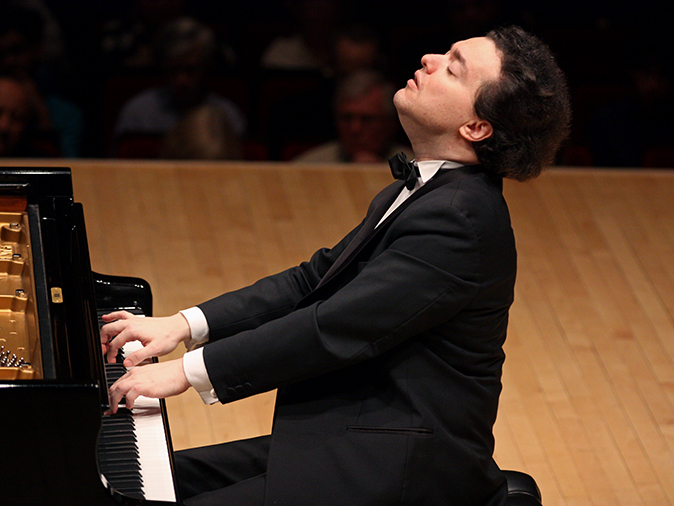by Peter Feher

It’s his signature move for a reason. With these extra, off-the-cuff performances, Kissin shows remarkable command and pacing. He manages simultaneously to satisfy his own artistic standards and to respond to the demands of the crowd. When the mood is right, he can go on for hours, racking up a dozen encores that all but upstage the planned recital in breadth and artistry.
Sure enough, Sunday’s curtain call rivaled and exceeded much of the playing that had come before. The first encore, Ferruccio Busoni’s arrangement of Bach’s Chorale Prelude in g, was meant to parallel the concert’s opening work, the Carl Tausig transcription of Bach’s Toccata and Fugue in d — both pieces originally for organ. But while Kissin gave the Prelude the brooding, introspective space it needed, he blew through the opening phrases of the Toccata.
This set an agitated tone for the evening, which continued with an anguished reading of Mozart’s Adagio in b, K. 540. The pianist labored over each unpleasant harmony, dwelling in an entirely different world from the brilliance and effervescence of his Mozart encore, the Rondo in D, K. 485.
With his listed repertoire, Kissin gave the impression of a performer who has already worked out his perfect interpretation and refuses to compromise in the moment. Such single-mindedness paid off selectively, when the pianist found the right composer to match.
He illuminated sections of Beethoven’s Sonata No. 31 in A-flat, Op. 110, treating the piece as one continuous flow rather than pausing between movements. Certain elements, like the scherzo, got lost in the shuffle. But the sonata’s crowning achievement — two fugues that emerge in the finale — took shape with complete clarity, almost as if he were making them up on the spot.
But Chopin was the composer of the night. Kissin returned to his music again and again, starting with a set of seven Mazurkas. The pianist approached these little dances with a certain profundity that gave weight to the shorter selections but complemented the more substantial beautifully — in particular, the Mazurka in b, Op. 33, No. 4.
Kissin hit his stride with Chopin’s bigger, showier works. He sounded like he was just getting started with the pyrotechnics of the Andante spianato and Grande Polonaise Brillante in E-flat, Op. 22 — the end of his printed program.
Two Chopin encores confirmed he wasn’t finished. First, he flashed some more technique with the Polonaise in A-flat, Op. 53. Then, he pulled back with one of the composer’s Waltzes, graciously signaling the end of the evening, even as the audience applauded for more.
Published on ClevelandClassical.com April 27, 2022.
Click here for a printable copy of this article

